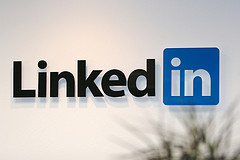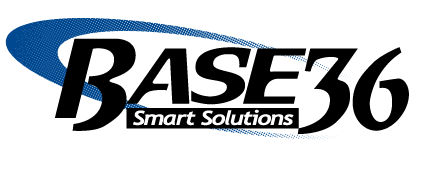LinkedIn. It’s today’s largest, and most successful, business focused social media networking platform. Despite it’s ability to connect millions of people and help place thousands in new roles, a large number of people are still holding out on joining. A surprising number of technical consultants are included in this list of holdouts.
business focused social media networking platform. Despite it’s ability to connect millions of people and help place thousands in new roles, a large number of people are still holding out on joining. A surprising number of technical consultants are included in this list of holdouts.
Though not having a LinkedIn profile doesn’t disqualify you from an IT consulting position, it puts you at a distinct disadvantage in the job application process. Learn how to set-up and optimize your LinkedIn profile so that you can be found by technical recruiters, and land your dream gig.
Why LinkedIn? Isn’t a resume good enough?
When our technical recruiters here at Base36 receive an application from a potential technical consultant, one of the first things they do is jump on LinkedIn and check out the candidate’s profile. You’re probably thinking, “Isn’t that a waste of time? Don’t you have their resume right in front of you?”
Sure, we have their resume in front of us, but that doesn’t matter. Your LinkedIn profile and resume are two different, though connected, entities.
– Your resume is written for a specific role. It is full of keywords specific to that particular contract, and illustrates how you’d be a good fit for both the position and organization.
– A LinkedIn profile, on the other hand, is an overview of your skills. It showcases your general strengths, and allows you to be a little less formal than on a traditional resume. Your references and summary will allow your personality to shine through.
A technical recruiter or a hiring manager will oftentimes read someone’s resume, think them to be a good fit, and will then use LinkedIn to find out more about this person. The greater detail on your LinkedIn profile allows people to learn more about you, and decide whether or not you’d be worth an interview.
How to make your LinkedIn profile:
One. Fill out the basics
– Name
– Location
– Industry
– Education
– Current Position with description
– Previous Positions with description
Two. Headline
Your headline is a short phrase that summarizes your professional identity, and appears underneath your name in LinkedIn search results. Take special care with this phrase. If it isn’t well thought-out and doesn’t aptly describe your abilities, technical recruiters and hiring managers won’t click on your profile.
– Good Headlines: Clear, concise.
– Good Headline Examples: Senior Java Developer, QA Project Lead
– Bad Headlines: Have buzzwords, don’t give a clear indication of who you are/what you do.
– Bad Headline Examples: QA Guru, Linux
Three. Summary
Though you have the ability to put a professional summary on your resume, you can only write a couple of lines. With a LinkedIn profile, there is more room. You can write a paragraph or two, allowing potential employers to learn more about you, your experience, and your professional goals.
When writing this summary, you have to ask yourself:
– What do I want people to remember about me?
– How am I different?
– What value will I add?
The answers to these questions should be in the first paragraph of your summary. If it’s compelling, then technical recruiters and hiring managers will read on. Even if they only read the first paragraph, they’ll have gotten the important information about you and what makes you different.
Four. Recommendations
Some believe that recommendations are the most influential part of your LinkedIn profile. While you have references attached to your resume, technical recruiters and hiring managers have to call these people to see what they have to say about you. With LinkedIn, they are there for everyone to see. People can find out just how wonderful you are with a click of the mouse.
Get recommendations from your colleagues, past employers, managers – everyone. Make sure that the best of the best are visible, and that they aren’t generic. If your references make you sound like you can jump the Atlantic in a single bound, you’ll be in good shape. They’ll leave quite the impression on those considering hiring you.
Five. Add Skills
The skills section of your LinkedIn profile is important for two reasons.
– Firstly, just as it does on your resume, a summary of your skills gives potential employers a look at the breadth of your expertise.
– Secondly, your skills section makes you searchable. If a technical recruiter is looking for a Java Developer with SQL and IDEs experience, and your skills happen to match, they may reach out to you. You may find out about a position you never even knew existed, one that could be the best fit for you. LinkedIn streamlines the job search process.
Six. Add a photo
In some studies, it’s been proven that people are more likely to click on an individual with a picture on LinkedIn. You want to be found, right? So what’s stopping you?
are more likely to click on an individual with a picture on LinkedIn. You want to be found, right? So what’s stopping you?
It is important to note that these images must be professional – not professionally done just presentable. As much as you might want to put a picture of you dressed up as a dinosaur, LinkedIn isn’t the place. Sorry!
Seven. Add connections
Find people on LinkedIn that you have worked with, and ask them to connect with you. LinkedIn is all about making connections, and they certainly come in handy. If you’re searching for a Project Manager role, for example, you can:
– Ask other PMs in your network whether or not they know about openings
– Reach out to contacts that have an opening at their company.
You’re able to extend your network, and keep in touch with old colleagues, through LinkedIn. Through looking at their profiles, or sending messages, you have the potential to find out about roles that may not be on your radar.
Eight. Join Groups
There are groups on LinkedIn. And when I say groups, I mean that there are thousands of groups focused on hundreds of different topics. If you’re interested in QA, for example, there are a dozen or so groups you could join.
By becoming a part of these groups, and adding to their discussions, you become more findable and illustrate both passion and thought leadership. If you’re a passionate thought-provoking technical consultant, you’re golden. LinkedIn allows you to illustrate that in a more tangible way than, say, bragging about it.
 LinkedIn profiles are an important part of the technical recruiting process. They allow recruiters and hiring managers to understand you, your background, and your goals more completely. This information is crucial as they move forward, trying to find the best fit for their client or organization. A thoughtfully completed LinkedIn profile ensures that, if you have the right skills, you’ll make the all-important interview round.
LinkedIn profiles are an important part of the technical recruiting process. They allow recruiters and hiring managers to understand you, your background, and your goals more completely. This information is crucial as they move forward, trying to find the best fit for their client or organization. A thoughtfully completed LinkedIn profile ensures that, if you have the right skills, you’ll make the all-important interview round.
Are you on LinkedIn? Why or why not? If you are, what have your experiences been? Would you recommend the site to others? Let us know in the comments section below, or join the conversation on Facebook, Twitter, or LinkedIn.
Thanks to TheSeafarer, adrigu, and mariosunder for the use of their respective photographs.


